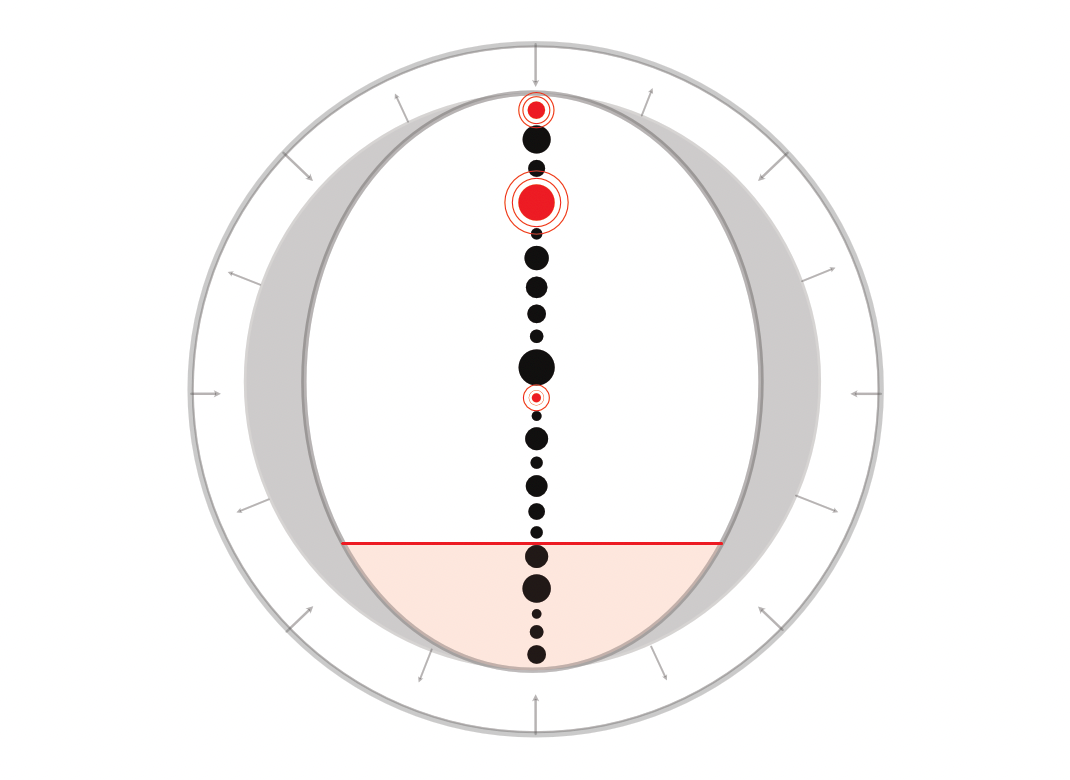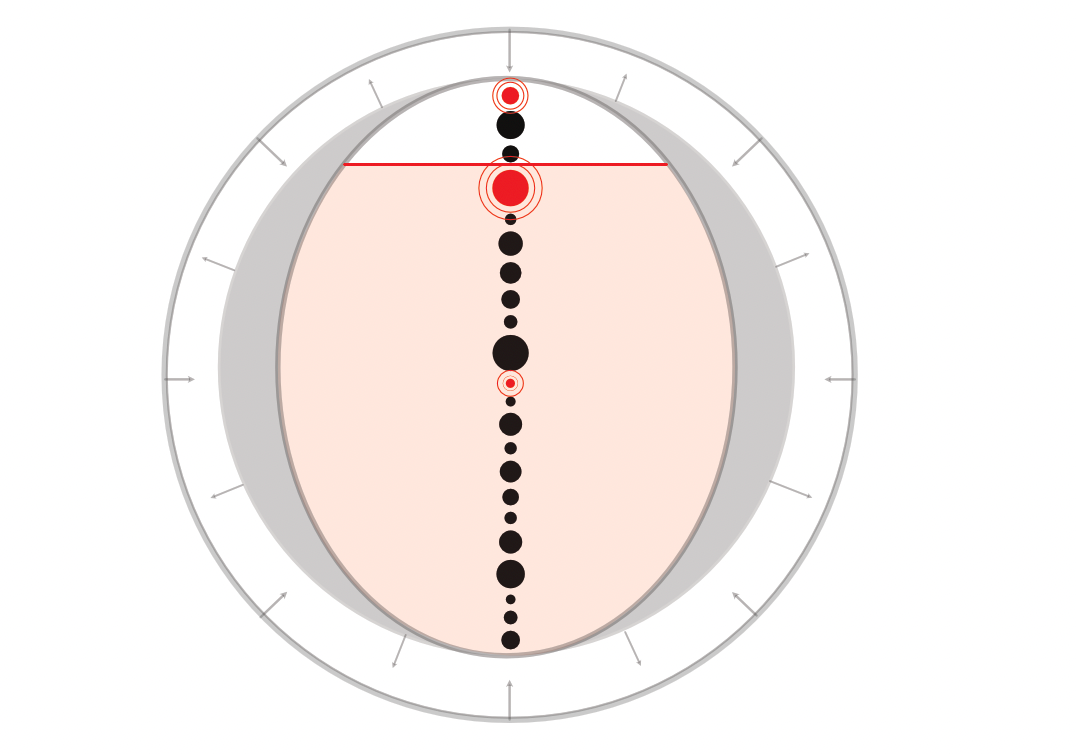Reality Adhesion Threshold
A novel framework for what leads to cognitive dissonance
Further constraint to the data pool as part of experience
I said way back at the beginning that there was nothing new in here. I still believe that. However, I've yet to find anyone trying to model and make sense of the full group of potential interactions that makes one person decide to hate someone for an arbitrary characteristic — like being LGBTQ+ — and another person just, simply, accepting it, without the the pre-qualifier of being somewhere in that group.
We've studied the negative aspect. There's more writing about that than I can easily track down; and there's more articulation and studies around it all the time. Love is love; but it's also true that hate is hate, and it makes our world a violent, disgusting place.
Information is my hammer in the "everything looks like a nail when you have a hammer" cognitive bias (aka the Law of the Instrument). I know it; anyone this deep into this book knows it; anyone who works with me knows it. However, this particular hypothetical was one of the hardest ones to balance in this entire book. I spent decades looking at and rejecting environment models, but that felt like looking for a needle in a haystack. This one felt like defining "what is a haystack?" in a desert environment.
When it finally coalesced, it was like a star shining in my brain, instant as a light bulb. I tested it against nearby events and far-flung news. It never oscillated and collapsed. It's informational balance holds.
It didn't come together until I had the nascent processing chain. It is entirely predicated on information and how we manage it, combining with our emotions, and following the scent of cognitive dissonance. It works because of information, and in an emotional response to information.
The framework in which I'm thinking about it is:
- The ‘threshold’ works in the same high-low state as a pain threshold. A high pain threshold means that they can take more pain; a high reality adhesion threshold means they can take more reality.
- It is, in short, the flexibility of an individual’s internalized experience to acknowledge and modify according to new input, and their level of reaction to that input.
- It’s variable by person, according to their individual processing chain and ouruborus of perception, e.g., they might not see a roach one day and it won’t even breach perception; another day they’ll see a roach but insist it was a beetle; another day they'll scream and stomp. It's when they see and recognize what they don't want to exist, does, that is defining.
- I think this is a defining factor between someone’s sensibility being tweaked and actual harm being visited.
- Individual’s cognitive dissonance is variable in:
- Overall population, e.g., tends to hit a certain level across everything on one side of the spectrum node, to nuanced on a case-by-case basis on the other side
- Time, with time and thought/no-thought pushing them into a deeper or higher threshold
- Experience, where sensibility/actual harm pushes deeper/higher based on sensed versus actualized outcomes, their understanding of it, and whether that creates or lesses cognitive dissonance — e.g., it’s potentially recursive
Examples
Individual A, with a low reality adhesion threshold, sees two people in love that deviates from their internalized understanding.
- It breaks their chain of factors
- They do not accept the reality, refuse to analyze why and just focus on the immediate reaction
- They react based on the emotional pain instigated by the break: shun (behavior), epithets (vocalize), and ultimately beat (action) to eradicate the behavior
- Focus: ensure reality adheres to their belief system
Individual B, with a high reality adhesion threshold, sees an extraterrestrial, which (again) deviates from their internalized understanding.
- It breaks their chain of factors
- They accept reality, potentially (hopefully?) after some skeptical analysis
- They rethink their factors to include the new information
- Focus: ensure their belief system adheres to reality
emotions, environment, factors, failing information states, fungible, juxtaposition, ouruborus, processing chain, time
Anti-Defamation League. (2023). Year in Review: Anti-LGBTQ+ Hate & Extremism Incidents, 2022 – 2023. https://www.adl.org/resources/report/year-review-anti-lgbtq-hate-extremism-incidents-2022-2023
Bennett, G., Norris, C., & Hastings, D. (2023, August 31). How the rise of anti-LGBTQ+ hate and violence is impacting the community. PBS News. https://www.pbs.org/newshour/show/how-the-rise-of-anti-lgbtq-hate-and-violence-is-impacting-the-community
Mapping Attacks on LGBTQ Rights in U.S. State Legislatures in 2024. (2024, December 6). American Civil Liberties Union. https://www.aclu.org/legislative-attacks-on-lgbtq-rights-2024
The ALERT Desk: Anti-LGBTQ Extremism Reporting Tracker. (2024, September 27). GLAAD | GLAAD Rewrites the Script for LGBTQ Acceptance; GLAAD. https://glaad.org/anti-lgbtq-extremism-reporting-tracker/
Trevor News. (2023, January 19). New Poll Emphasizes Negative Impacts of Anti-LGBTQ Policies on LGBTQ Youth. Thetrevorproject.org. https://www.thetrevorproject.org/blog/new-poll-emphasizes-negative-impacts-of-anti-lgbtq-policies-on-lgbtq-youth/
...hate...
30 years on, South Africa still dismantling racism and apartheid’s legacy. (2024, April 17). Ohchr.org. https://www.ohchr.org/en/stories/2024/04/30-years-south-africa-still-dismantling-racism-and-apartheids-legacy
Abrams, A. (2017). The psychology of hate: why do we hate? Psychology Today. https://doi.org/10.1037/10930-000
Fischer, A., Halperin, E., Canetti, D., & Jasini, A. (2018). Why we hate. Emotion Review: Journal of the International Society for Research on Emotion, 10(4), 309–320. https://doi.org/10.1177/1754073917751229
Israel’s Apartheid Against Palestinians. (2022, February 1). Amnesty.org. https://www.amnesty.org/en/latest/campaigns/2022/02/israels-system-of-apartheid/
Wikipedia contributors. Allegations of apartheid by country. Wikipedia, The Free Encyclopedia. https://en.wikipedia.org/w/index.php?title=Allegations_of_apartheid_by_country&oldid=1286571889
Wikipedia contributors. Hate crime. Wikipedia, The Free Encyclopedia. https://en.wikipedia.org/w/index.php?title=Hate_crime&oldid=1286812906

